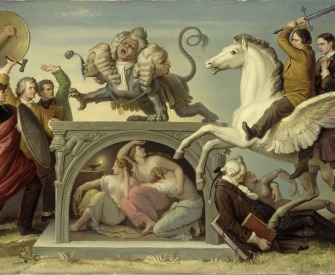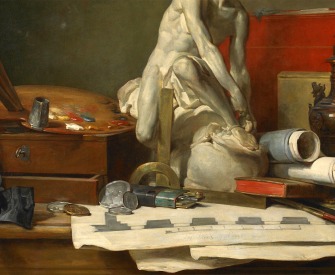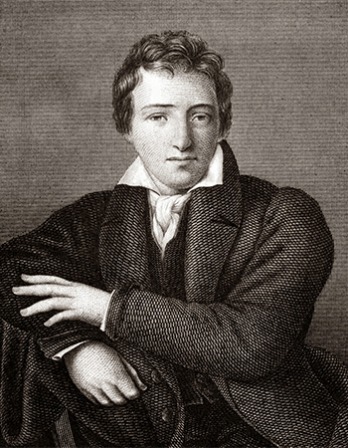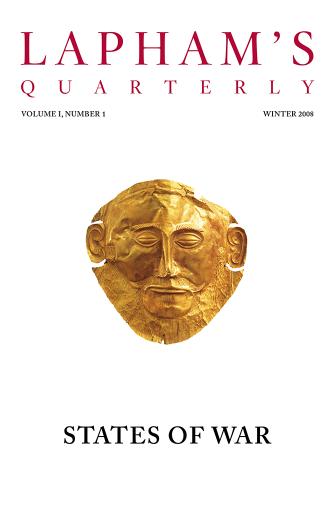In Worcester, Massachusetts,
I went with Aunt Consuelo
to keep her dentist’s appointment
and sat and waited for her
in the dentist’s waiting room.
It was winter. It got dark
early. The waiting room
was full of grown-up people,
arctics and overcoats,
lamps and magazines.
My aunt was inside
what seemed like a long time
and while I waited I read
the National Geographic
(I could read) and carefully
studied the photographs:
the inside of a volcano,
black, and full of ashes;
then it was spilling over
in rivulets of fire.
Osa and Martin Johnson
dressed in riding breeches,
laced boots, and pith helmets.
A dead man slung on a pole
—“Long Pig,” the caption said.
Babies with pointed heads
wound round and round with string;
black, naked women with necks
wound round and round with wire
like the necks of lightbulbs.
Their breasts were horrifying.
I read it right straight through.
I was too shy to stop.
And then I looked at the cover:
the yellow margins, the date.
Suddenly, from inside,
came an oh! of pain
—Aunt Consuelo’s voice—
not very loud or long.
I wasn’t at all surprised;
even then I knew she was
a foolish, timid woman.
I might have been embarrassed,
but wasn’t. What took me
completely by surprise
was that it was me:
my voice, in my mouth.
Without thinking at all
I was my foolish aunt,
I—we—were falling, falling,
our eyes glued to the cover
of the National Geographic,
February, 1918.
I said to myself: three days
and you’ll be seven years old.
I was saying it to stop
the sensation of falling off
the round, turning world
into cold, blue-black space.
But I felt: you are an I,
you are an Elizabeth,
you are one of them.
Why should you be one, too?
I scarcely dared to look
to see what it was I was.
I gave a sidelong glance
—I couldn’t look any higher—
at shadowy gray knees,
trousers and skirts and boots
and different pairs of hands
lying under the lamps.
I knew that nothing stranger
had ever happened, that nothing
stranger could ever happen.
Why should I be my aunt,
or me, or anyone?
What similarities—
boots, hands, the family voice
I felt in my throat, or even
the National Geographic
and those awful hanging breasts—
held us all together
or made us all just one?
How—I didn’t know any
word for it—how “unlikely”…
How had I come to be here,
like them, and overhear
a cry of pain that could have
got loud and worse but hadn’t?
The waiting room was bright
and too hot. It was sliding
beneath a big black wave,
another, and another.
Then I was back in it.
The war was on. Outside,
in Worcester, Massachusetts,
were night and slush and cold,
and it was still the fifth
of February, 1918.
CAUTION: Users are warned that this work is protected under copyright laws and downloading is strictly prohibited. The right to reproduce or transfer the work via any medium must be secured with Farrar, Straus and Giroux, LLC.
“In the Waiting Room.” When Bishop was eight months old, her father died of Bright’s disease; when she was five, her mother was diagnosed as insane. After living briefly in Nova Scotia with her maternal grandparents, she moved in with her paternal grandparents in Massachusetts, where, she recalled, “at night I lay blinking my flashlight off and on, and crying.” Bishop published Poems: North and South—A Cold Spring in 1955 and received a Pulitzer Prize for it. She died at the age of sixty-eight in 1979.
Back to Issue




